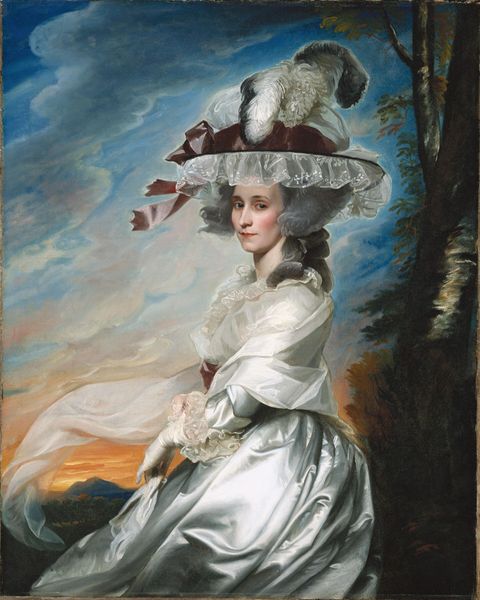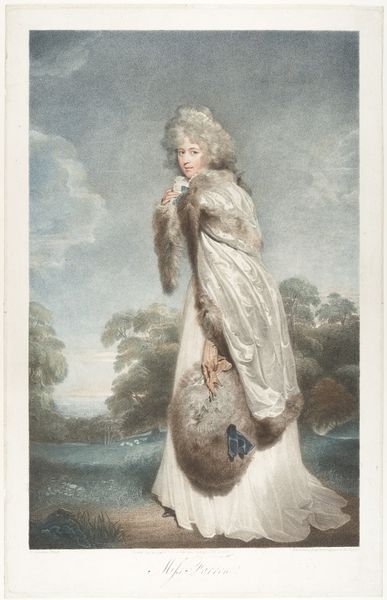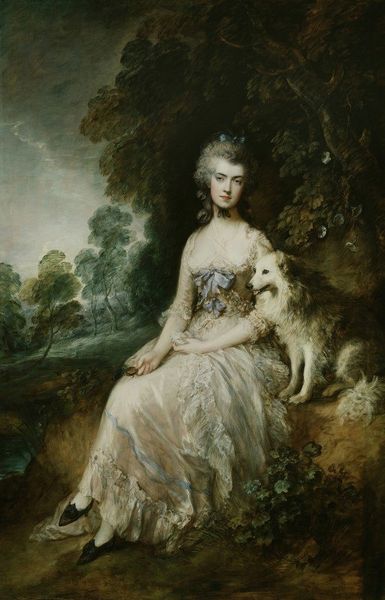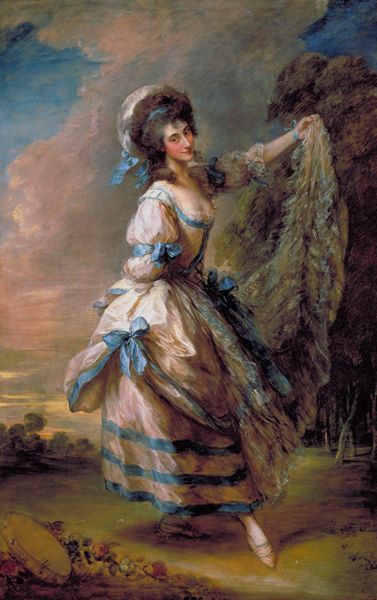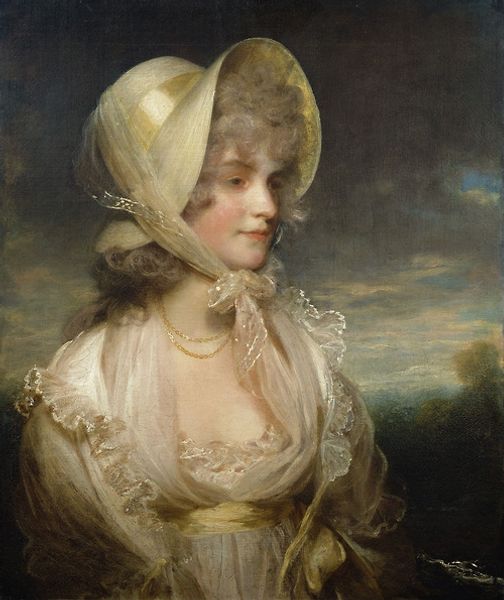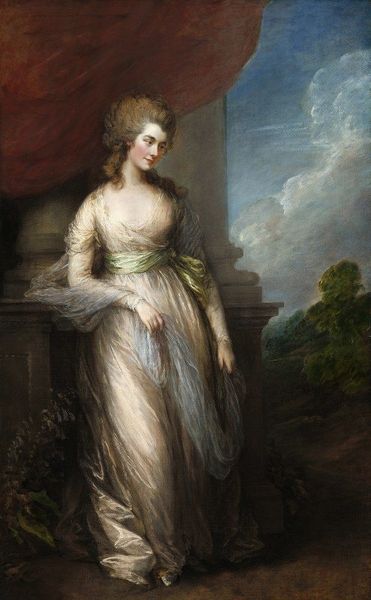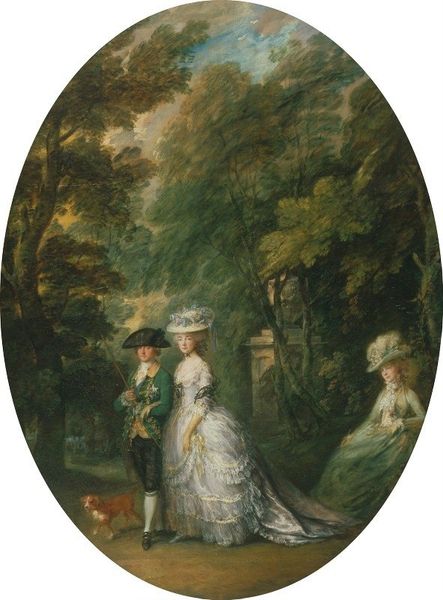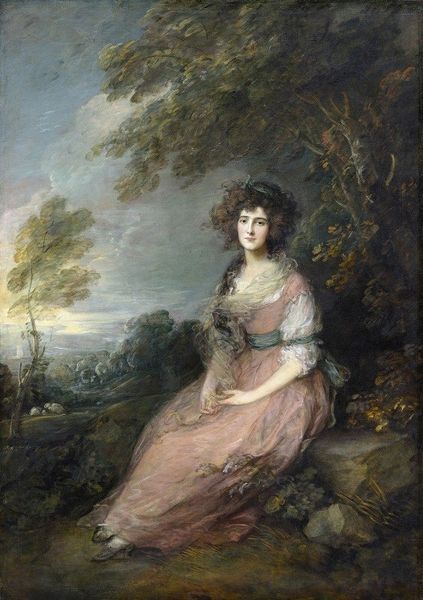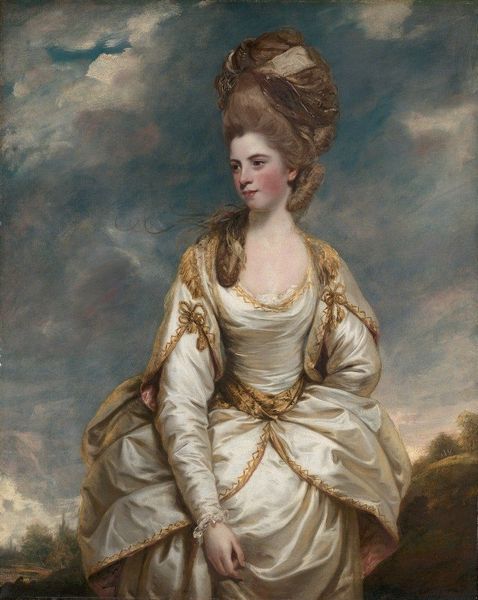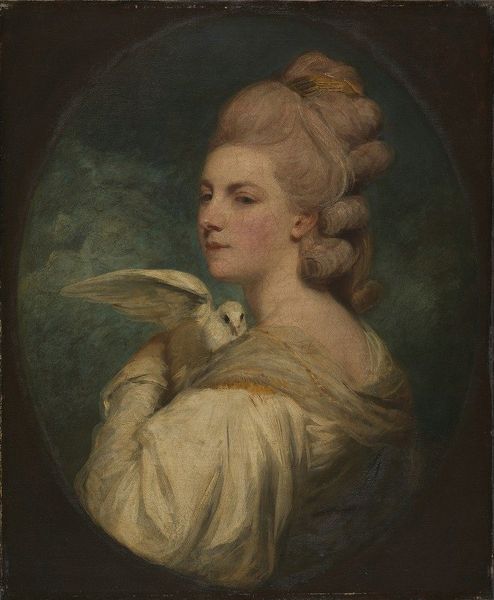
Elizabeth Farren (born c. 1759, died 1829), Later Countess of Derby
0:00
0:00
oil-paint
#
portrait
#
gouache
#
oil-paint
#
landscape
#
figuration
#
oil painting
#
romanticism
Copyright: Public domain
Editor: Thomas Lawrence painted this portrait, “Elizabeth Farren, Later Countess of Derby,” and its lushness immediately draws me in. She's glancing back as if surprised, in front of this very romantic landscape. What’s your take on the context of this painting? Curator: Lawrence masterfully captures Farren's elegance and social position through visual cues. The backdrop suggests wealth, leisure, and the subject’s connection to the English countryside – the landed gentry were, after all, the driving force behind much of British cultural production at the time. Look how her clothing signals both status and an embrace of current trends; Lawrence, by including these, tacitly underscores Farren's social performance. How does her gaze affect you? Editor: I think it's almost coquettish, definitely aware. But what's interesting is how that almost playful aspect exists alongside such clear symbols of wealth and power. Was this duality common? Curator: Indeed. Portraiture of this era was often deployed strategically, constructing a visual narrative of the sitter's identity. Farren was an actress, stepping outside her original class—that upward mobility was part of the burgeoning culture, as well as part of her fame, as seen through the circulation of engraved copies after the original. The "coquettish" glance becomes fascinating when considering it through the lens of performance and celebrity in late 18th-century Britain. How do you think this image would have been consumed by different audiences at the time? Editor: I imagine the elite would appreciate the confirmation of their status, but maybe the rising middle class would also be intrigued by the display of wealth and social climbing. I hadn't really considered the role of portraits in shaping public perception back then. Curator: Precisely. These portraits, prominently displayed, were actively participating in shaping social values and aspirations. Considering such art in the light of what and whom it represents is always crucial to truly understand it. Editor: That’s a fascinating perspective; thanks for highlighting how art, class, and public perception intertwine. Curator: My pleasure. Thinking through such historical elements enriches our understanding of visual imagery across any subject.
Comments
No comments
Be the first to comment and join the conversation on the ultimate creative platform.
